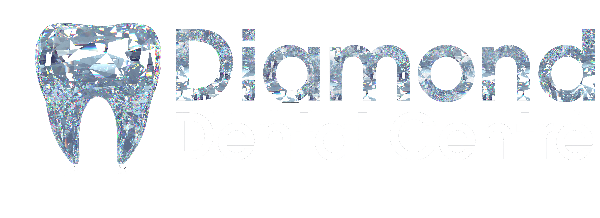What’s the difference between braces and clear aligners?
Deciding to straighten your teeth can be a big decision to make, especially as an adult. And many of us are resentful that we weren’t given the option by our parents and could’ve suffered through the ‘ugly braces’ phase as a teenager. And years of looking at that crooked tooth or awkward gap has us all wondering, ‘How can I fix my smile as an adult? What are clear aligners? Are they this expensive trend or are braces the better option for me?’
At Diamond Dental, our team of professionals are dedicated in assisting you in making the correct decisions for your oral health, and strive to ensure you are provided with all relevant information, and providing the perfect smile you’ve always dreamt of.
Let’s begin with clear aligners, which are thin, plastic and mostly-invisible trays that your wear on your lower and upper teeth. We start by collecting data and taking a 3D scan of your teeth which gets sent away to the lab. You are provided with a digital video of exactly how your teeth are going to move and what the expected results are going to be once treatment is completed. You are provided with a series of trays which incrementally move your teeth into the desired position.
The Advantages of Clear Aligners
Aligners are Clear and Invisible - No One Can Tell You Are Straightening Your Teeth
The greatest benefit of aligners ind is that the retainers are virtually invisible. Adult patients love that colleagues and clients can’t see they are undergoing orthodontic treatment. Teenagers also tend to prefer these over braces. With clear aligners, you don’t go through a period of people commenting on your new braces, and you won’t be worried about your smile in photos.
More Affordable and Faster Than Braces
We are often asked, ‘Are braces cheaper than clear aligners?’ The answer does change case by case, depending on the severity, however the vast majority of clear aligner cases cost much less than the braces option for that exact case. Braces average in Australia from $6,000 - $9,500 whereas clear aligners sit between $3,000 - $7,000.
You Can Take the Aligners Out to Eat
Clear aligners are completely removable, so you don’t need to give up your favourite snacks, no matter how sticky or crunchy. With braces, you will need to go on a soft diet every few weeks when the braces are tightened, strictly no sticky food that can get stuck on your brackets and nothing hard that could break the wire.
Oral Hygiene Routine Stays the Same
As well as when eating and drinking, you’ll also remove your aligners to brush your teeth. With nothing on your teeth to worry about, you can continue brushing and flossing as you did previously. With braces, developing gum problems can be common due to difficulty brushing around the brackets and having to change the way you floss.
Fewer Consultations Required
With clear aligners, much of the work happens before you even receive your aligners. A 3D scan of your teeth is used to create all of your customised retainers in a laboratory. All you need to worry about is changing your aligners every few weeks as per your dentist’s instructions. And the appointments that do require you to attend the clinic are very quick, easy and painless as we ensure you are running on track for that perfect smile.
More Comfortable Than Braces
You may be wondering, ‘Are braces or aligners more painful?’ Regardless of the option you choose, moving teeth can be uncomfortable. However, we do find that clear aligners are most comfortable as there are no wires, sharp brackets or hooks, and are made from silky smooth plastic that won’t irritate your lips when you talk or cut your cheek.
Clear Aligners Disadvantages
You Need to be Self- Disciplined
Being able to remove your aligners is both a pro and a con. If you aren’t someone who is disciplined about putting your aligners back in your mouth after eating or brushing, you aren’t going to wear them for the required 22 hours per day. This can result in teeth not moving to their correct positions, dragging out the treatment time and can also cost you more money. The major cause for clear aligner failure is primarily related to lack of patient compliance with wearing the aligners.
Attachments
Some clear aligner patients require attachments (or ‘engagers’) to help the aligners grip and move stubborn teeth into place. You may need only a couple or you may need them on a multitude of teeth. While the button-like attachments are matched to the colour of your teeth, they can appear like you’re wearing clear braces, rather than aligners.
Let’s Talk About Braces
Braces are what most people think of when contemplating straightening their teeth. Braces are traditionally made of metal and attached to the outside of the teeth. Metal wires and rubber bands are attached to the brackets to manipulate the teeth to correct crowding or other orthodontic issues.
The Advantages of Braces
Best for Complex Cases
Braces can be suitable for a larger variety of treatments, including the extremely difficult cases. You may have multiple dental and facial issues that need correcting - braces can be used to fix each one so you finish treatment with all issues fixed. Other than general teeth crowding, braces can also be used to resolve; extremely large gaps in arch, Intrusion and Extrusion which is the tooths position in the jawbone, and certain bites if they are extreme. These issues sometimes cannot be fixed with aligners.
The Disadvantages of Braces
Slower Treatment Time
Braces usually take more than a year to complete (1 year and 6 months is the average time from beginning of treatment to the end), while in comparison, aligners most commonly take up to 12 months – only a small minority of the cases take longer than 1 year.
The aesthic look of the braces
Some people don’t like the look of traditional braces. They are worried they will feel self conscious about their appearance in some social settings. Metal braces are very prominent and can also make your teeth look darker.
Oral Hygiene is more difficult with braces
Brushing and flossing your teeth is significantly more difficult with braces. If you don’t clean your teeth properly, you risk having plaque build-up around the braces which can lead to staining and decay.
Diet and Food
Care needs to be taken with the food and drink you consume with braces. Hard and sticky foods can cause the arch wire to break or a bracket to dislodge from a tooth. Once this happens, the braces won’t work until you have the breakage repaired. Multiple breakages can prolong your treatment time.
Regular Consultations
More regular visits to the orthodontist are required with braces to check on progress and have them adjusted. Around once per month your orthodontist will check how much your teeth have moved and make changes so they continue to move your teeth in the direction they need to go.
Cost
Braces are known to be very costly, especially in comparison to Clear aligners, with the average cost of the entire braces treatment in Australia ranging from $3000 to $9000AUD.
To conclude, both options have their pros and cons. Whilst clear aligners may be faster and more affordable, they might not be a great option if there is major correction to be done. Clear aligners are wonderful for appearance and allowing you to keep your diet the same, but will you remember to put them back in after eating? If you’re very forgetful, fixed braces might be more suitable.
We hope this article has helped you on the path towards making an informed decision on how you want to straighten your teeth. We always recommend talking to your dentist for more information. Book online for a consultation with one of our dentist and start smiling confidently, today!
Written by Sana Hussain - 17 August 2023






